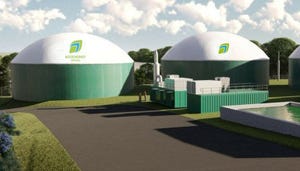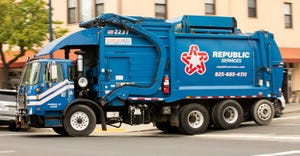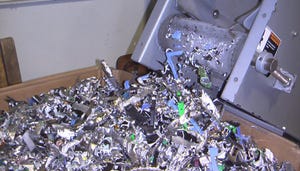TECHNOLOGY: New Technology Delves Deeper Into Fiber Waste
January 1, 1996
Daniel B. Mulligan
A driving force behind 1995's record high prices for recovered paper was the insatiable demand from the large, recently expanded paper mills. Since then, supplies have scrambled to boost capture rates and locate new sources to compete with low-cost virgin fibers.
Meanwhile, small paper mills have been fighting a losing battle to remain competitive in a market dominated by economies of scale. However, recent technological advances could offer some solutions.
Between 1971 and 1994, 134 paper mills have closed. The mills had difficulty complying with environmental regulations and remaining profitable. Typically, these mills had small paper machines, producing less than 100 tons per day (tpd). Also, the mills found that processing market pulp into commodity grades of paper was both impractical and uneconomical without a cheap source of fiber.
Historically, virgin fiber based mills have advocated the "bigger is better" notion. As emphasis on recycling increased, the same thinking applied to deinking capacity. However, costs associated with capacity expansion reportedly are substantial due to the capital required for pulping, chemical recovery systems and the paper machines (see table).
Traditionally, on a cost-per-ton comparison, the systems that produce more than 250 tpd are more economical to install.
Given these trends, the larger companies likely will generate most of the demand for recovered paper materials, leaving smaller mills to purchase recycled fiber from market deinked producers. As a result, one long-term implication may be that smaller mills may not be able to control production costs.
One solution is to expand the base of recovered paper materials and make smaller systems more economical. The key may be systems that can process the difficult-to-recycle grades recovered in smaller quantities such as lined bags, polycoated and laminated or containing difficult-to-process contaminants such as heavy wet strength and wax coating.
One new small-scale system, the Continuous Batch Fiber Recovery System (CBFRS), developed by Dan Watson of Wichita Falls, Texas, uses a tunnel washer to process and deink recovered paper materials. The deinking process is modeled after systems that clean textiles and linens. CBFRS reportedly can process as low as three tpd of commodity grades, such as newspaper, OCC, mixed office waste and more difficult-to-process materials such as milk cartons, drink boxes, wax coated corrugated, laminated grades, heavy wet strength, polycoated or lined grades. Typically these materials are not regarded as economical to recycle and are not sorted because of their small volumes.
CBFRS is a series of interconnected cylindrical modules which oscillate in synch. Each module is an individual reaction vessel where temperature, chemistry, consistency and water counter flow can be controlled. Material is transferred from module to module using an internal transfer scoop. The modules reportedly can be configured to meet a particular material's processing requirements.
The system also can be configured to process multiple grades of materials at different times. As a result, the operator is less dependent on singular grades. Thus, the operators can purchase materials on the local or regional levels. This concept also can be applied to those either recovering or handling recovered paper materials to create a value-added pulp for resale rather than just the raw material.
Currently, this technology is processing 25 tpd in a paper mill at IPMC Inc., Detroit. The system is targeted to process recovered paper materials generated within Michigan and is focusing on polycoated grades.
Within the next 12 to 18 months, the system is expected to expand to 100 tpd. It will feature four processing lines, each producing 25 tpd of recycled fiber. Each line reportedly can produce fiber from different recovered material streams while operating simultaneously.
Other projects in the planning stages include: a 25 tpd minitissue mill, 150 tpd mixed office waste market deinked pulp mill, 12 tpd heavy wet strength broke reprocessing system, printed SBS/Poly system to displace market pulp, 250 tpd news deinking system, 20 tpd milk carton/drink box processing plant and a 30 percent wax-oated corrugated processing system to supplement an OCC system.
As each of these projects come on line, they may offer municipalities more potential markets for their recovered fibers.
You May Also Like


